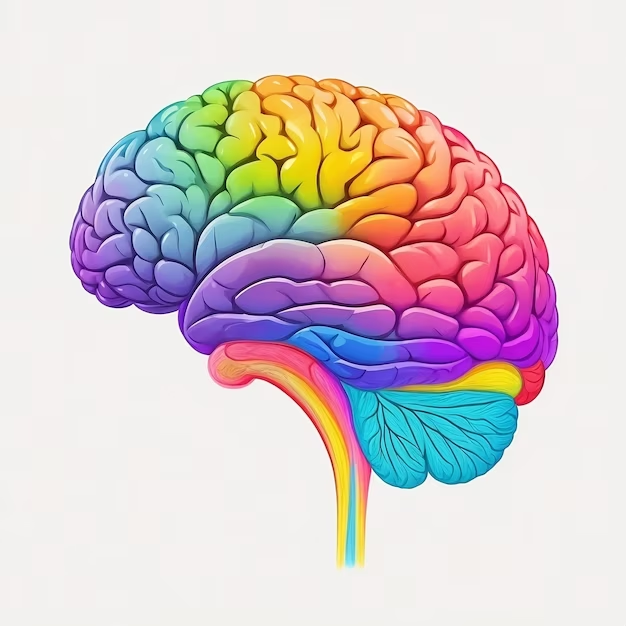Art Therapy

1. What is Art Therapy?
Art Therapy combines psychological techniques with the creative process to improve mental health and well-being. Through painting, drawing, sculpture, and other art forms, individuals can explore emotions, develop self-awareness, manage stress, and enhance cognitive abilities. This therapy is facilitated by professionals trained to decode non-verbal messages and symbols that are often expressed through art.
-
Expressive Mediums: Drawing, painting, sculpting -
Therapeutic Benefits: Stress management, self-awareness, emotional processing -
Professional Guidance: Led by trained art therapists
2. Harmonise Your Energy Centres Through Art
Art can be a powerful tool to balance and harmonize the body’s energy centers, or chakras. Creative activities like painting or sculpting engage the body and mind, helping to release blockages and allow energy to flow freely. Each color and form used can correspond to different energy centers, promoting health and spiritual well-being.
-
Mind-Body Engagement: Uses creative activities to engage and relax -
Chakra Alignment: Each artwork corresponds to different energy centers -
Holistic Wellbeing: Promotes health and spiritual wellness through art


3. Why Team Building Workshops Through Art?
Art-based team building workshops foster collaboration, communication, and creativity among team members. By engaging in collective art projects, colleagues can break down barriers, build trust, and enhance their ability to work together effectively. These workshops are not only fun but also integral in promoting a positive workplace culture.
-
Fosters Collaboration: Encourages teamwork through group art projects -
Enhances Communication: Breaks barriers and builds trust -
Cultivates Creativity: Promotes a positive, innovative workplace culture
4. Colour Therapy
Colour Therapy, or chromotherapy, uses the spectrum of colors to help heal and enhance a person’s mood and physical wellbeing. Different colors evoke different emotions and properties; for example, blue can induce relaxation while orange can boost energy. Integrating colour therapy into art creation can significantly affect one’s state of mind and health.
-
Emotional Influence: Different colors evoke specific moods and feelings -
Physical Wellbeing: Enhances physical health through chromotherapy -
Art Integration: Incorporates color principles into therapeutic practices


5. Building Better Emotional Resilience
Art therapy can play a pivotal role in building emotional resilience. By expressing themselves through art, individuals can confront difficult emotions, work through them in a constructive manner, and gain strength in facing life's challenges. This therapeutic approach helps develop coping mechanisms that can safeguard against emotional distress.
-
Expression of Emotions: Art as a safe outlet for confronting feelings -
Constructive Coping: Develops skills to manage life’s challenges -
Strengthening Resilience: Encourages growth from personal adversities
6. Enhancing Focus and Concentration
Creating art requires a high level of concentration and attention to detail, which can translate into improved focus and concentration in other areas of life. Regular engagement with artistic activities can help sharpen the mind and boost overall cognitive function.
-
Attention to Detail: Art making improves concentration -
Cognitive Benefits: Boosts overall brain function -
Skill Transfer: Enhances focus in other life areas


7. Overcoming Depression
Art therapy can be particularly effective in treating depression. It provides a non-verbal outlet for emotions, fosters a sense of accomplishment, and can be a powerful means for self-expression and communication, helping to alleviate symptoms and contribute to recovery.
-
Non-verbal Outlet: Provides a voice through visual expression -
Sense of Accomplishment: Boosts self-esteem and personal achievement -
Therapeutic Communication: Helps articulate feelings and thoughts
8. Employee Bonding and Productivity
Art programs in the workplace can enhance employee bonding and productivity. By providing a creative outlet, employees can relieve stress, express their unique perspectives in safe and nurturing ways, and form stronger connections with their peers, all of which contribute to a more productive work environment.
-
Stress Reduction: Art activities as a release from work stress -
Personal Expression: Employees share unique perspectives creatively -
Stronger Team Connections: Builds bonding, improving team efficiency


9. Intuitive Art Therapy
Intuitive Art Therapy encourages individuals to create art from their subconscious mind, which can reveal underlying thoughts and feelings. This form of therapy helps in understanding inner conflicts, unlocking creativity, and fostering decision-making that aligns more closely with one’s deeper self.
-
Subconscious Exploration: Reveals deeper thoughts and emotions -
Creativity Unlocked: Fosters natural, spontaneous artistic creation -
Aligned Decision-Making: Helps align choices with inner feelings
10. Canvas and Textures
Exploring different canvases and textures can significantly enrich the artistic process. Different materials can inspire unique forms of expression and affect the emotional impact of the artwork. Workshops that explore these mediums can enhance artistic skills and sensory experiences.
-
Material Variety: Explores impact of different artistic mediums -
Expressive Impact: How textures influence the emotional effect of art -
Skill Enhancement: Develops finer skills in handling diverse materials


11. Colours of the Season
Seasonally inspired art sessions can be both thematic and therapeutic. By focusing on colors that represent different times of the year, these sessions can help participants connect more deeply with the natural world and the rhythms of life, promoting mindfulness and seasonal awareness.
-
Seasonal Inspiration: Uses colors reflective of various seasons -
Mindfulness Promotion: Encourages awareness of the present moment -
Thematic Creativity: Engages artists in seasonal themes and expression
12. Art Meetups Every Sunday Morning on Zoom
Join our virtual community every Sunday morning for art meetups on Zoom. These sessions are designed to inspire creativity, foster connections, and provide a supportive space for artists and enthusiasts to share and grow together, regardless of their physical location.
-
Creative Community: Builds a network of artists and enthusiasts -
Regular Inspiration: Weekly sessions to fuel creativity -
Accessibility: Connects individuals globally in a virtual space


13. The Importance of Murals
Murals have the power to transform spaces and communities. As large-scale public artworks, they not only beautify environments but also convey messages, celebrate history, and generate cultural ties. Murals can be collaborative projects that foster community engagement and pride.
-
Community Transformation: Beautifies and revitalizes public spaces -
Cultural Expression: Conveys community messages and values -
Collaborative Creation: Encourages community participation and pride
